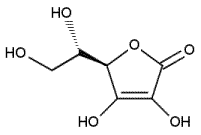Lesson 4: Drug Nomenclature/Naming of Drugs, Rules for Drug Administration
Contents
Introduction
Drugs are classifies into convenient groups for the sake of conformity, standardization, esoteric values of manufactures, research and replication and quality asurance. There are basically three classes of drugs which is recognized by drug companies and regulatory bodies.
At the end of the lesson the learners will;
|
Lesson Content
Drug Nomenclature/Naming of Drugs
This is the system that puts drugs into classification and the three name classifications of drugs are the Chemical/Molecular/Scientific name, the Generic or Non-Proprietary name, and the Brand or Trade or Proprietary name.
- Chemical Name: It depicts the chemical/molecular structure of the drug. It states the structure in terms of atoms and molecules accompanied by a diagram of the chemical structure. They are long and can be clumsy and are useful to a few technically trained personnel. For example acetyl-p-amino-phenol is for Paracetamol and the image above gives the structure of Vitamin C.
- Non-Proprietary/Generic/Approved Name: This is the abbreviated and approved name of the drug. It is the official medical name assigned by the producer in collaboration with the Food and Drugs Board and Nomenclature Committee. The generic name may be used by any interested party and it removes the confusion of giving several names to the same drug regardless of who manufactures them once they have the same chemical structure. A generic drug name is not capitalized; for example, aluminum hydroxide.
- Proprietary/Trade/Brand Name: These are names given to the drug by the manufacturing and marketing company. They are copyrighted terms selected by a manufacturer to designate a particular product Copyright laws prevent any other person from using the name, and other laws prevent pharmacists from substituting chemically identical products for the trade name article. In most cases one drug could have so many trade/brand names e.g Acetaminophen has about 30 trade names. Some are Paracetamol, Tylenol, Paramol, Panadol, Capol etc.
Two major methods of dispensing drugs
Drugs are mainly available by prescription or as over the counter (OTC) medication and the same methods two major methods are used for dispensing the drugs There are advantages and disadvantages to both methods of dispensing. The methods are explained thus;
- Over-The-Counter (OTC): They do not need prescription and can be purchased at the chemical shops; examples are pain relievers, blood tonics, vitamin preparations, ORS, antacids, Antimalarials etc.
- Prescription: They need a prescription and must be controlled from abuse and dependence; e.g. antibiotics, anti-hypertensives, sedatives, diabetic drugs etc.
Rules For Drug Administration
- Read the drug prescription and be sure the medicine goes to right patient
- Check drug for accuracy with the label especially where the drug in not in original container
- Drug strength should correspond to the stated dosage e.g. Chloroquine may be 150mg or 200mg, Ampicillin 250mg and 500mg so client be should given according to strength which reflects the dosage and not quantity.
- Look at the expiry date, color, consistency of drug and make sure it is wholesome. Discard when drug is discolored, tablets are brittle, soft, cracked or powders and granules are caked.
- Use special handling if required
- Give information on user, quantity to be taken, how often, duration, precautions and special instructions if necessary
- Keep accurate record of drugs given, dosage, routes of administration and the data on patient.
- Promote compliance
Conclusion
The three class names of drugs are largely employed in the manufacture, prescription and trading activities of medicines. Though we have a large array of drugs for our use it is not always that the individual acquires the drug over the counter. Sometimes you may need to rely on the appropriate prescriber. Drugs are useful under many conditions of living organisms and nurses as members of the medical team have well spelt out responsibilities in follwing laid down rules and regulations.
|
This lesson took us through the three drug class names which are recognized and accepted by the prescribers, manufacturers, enterpreneurs, researchers, legal and regulation bodies. We also had a clear insight into the steps that nurses must take in ensuring wholesome drugs going to the right patients, in correct doses, with the right documentation and adequate information to patient. This will maximize the benefits minimize the harmful effects and promote compliance. |
